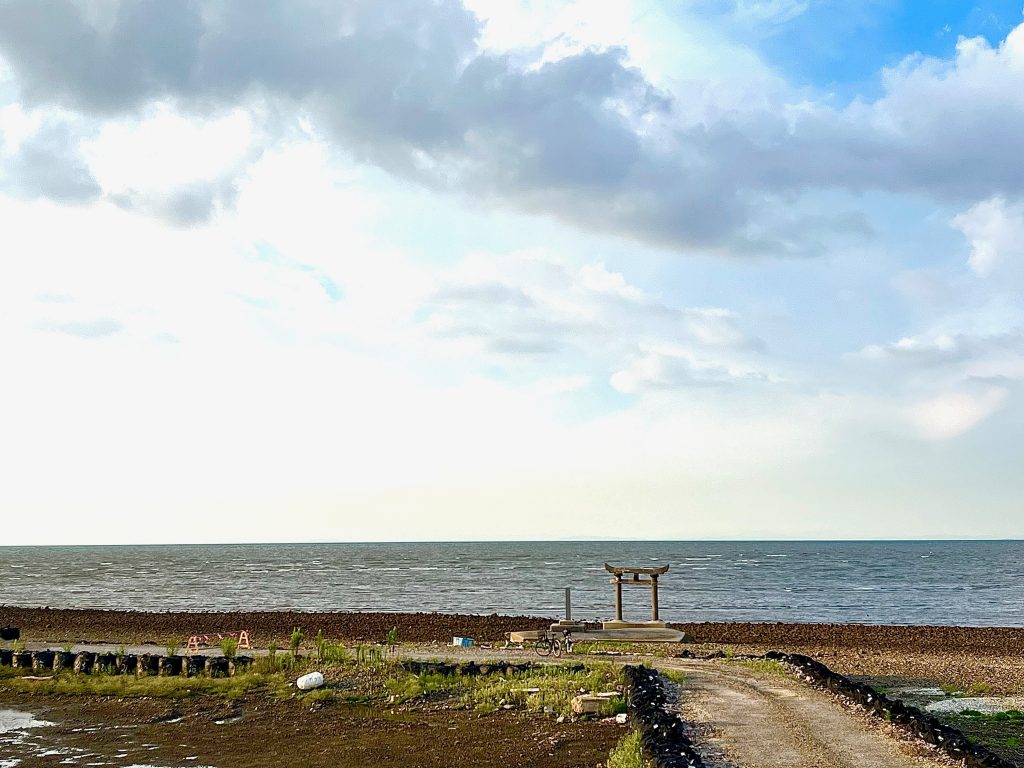by Shunichi Ito
Hello to all in the “Urban-rural migration and rural revitalization in Japan” Blog community! My name is Shunichi Ito, and I am very happy to be able to participate and share my experiences working and researching the Japanese countryside with you all.

That’s me!
Copyright © Shunichi Ito 2023
To introduce myself, I am currently leading a nikyoten seikatsu (a two location lifestyle) between Chiba Prefecture as a soon-to-be second year graduate student at Sophia University and Shimane Prefecture as a member of a RMO (regional management organization) for a small town called Omori-chō (大森町). As for my personal background, all I can say is that I have lived a quite mobile life. I was born in Los Angeles, but immediately moved to Japan until 4th grade, then moved back to the US (New Jersey), then to California for college. After graduating, I moved to Shimane Prefecture and lived and worked in a town called Omori-chō for three years, then moved to Chiba for graduate school, and here I am.
My graduating thesis at UC Berkeley was “Reimagening a New Generation of Hopeful Lifestyle in Japan: An Ethnographic Study of How a New Generation is finding Alternative Lifestyles in the Countryside” which I admit is quite a mouthful of a title. In the thesis, I conducted ethnographic research of I-turners and U-turners in my field site of Omori-chō. Specifically, on the conditions that acted as the push and pull incentives for moving, as well as their personal experiences comparing their lifestyles in urban Japan and now in the countryside. I was always interested in what constituted as a mainstream and hopeful lifestyle in contemporary Japan and how people who were disenchanted or could not realize those lifestyles were getting by in life.

My graduating thesis on “Reimagening a New Generation of Hopeful Lifestyle in Japan”
Copyright © Shunichi Ito 2023
I would now like to introduce my field site of Omori-chō to you all. To be more formal it is Omori-chō, Oda City, Shimane Prefecture (島根県,大田市,大森町)

The streets of Omori-chō
Copyright © Shunichi Ito, 2023
The village is surrounded by mountains on both sides forming a valley, where houses are stretched vertically along a straight road and the Ginzan River that runs through it. The valley, which is 3.1 kilometers long, is dived into two sections with the first 0.8 kilometers called the machinami or the townscape, and the rest of the 2.3 kilometers leading into the mountains is called the Ginzan District. This informal division of the town represents where the samurai bureaucracy/ commercial district was and where the silver miners lived during the Edo period.
Omori-chō is where the Iwami Ginzan Silver Mines is located, which was designated as a UNESCO World Heritage Site in 2007. Heritage tourism make up a large part of its economy as upon its initial designation, close to 800,000 people visited the village in a year. The main location of visitation is Ryugenji Silver mine, which is a silver mine tourists can enter at the top of the Ginzan District.

The Silver mines
Copyright © Shunichi Ito 2023
As of 2022 there are 393 people living in the village, where 40% of its population is over the age of 65, 9.67% between the ages of 20-30, and 14.76% are under the age of 14. While Omori has maintained its population of around 400 for the last 10 years, it is part of the population decline and super-aging society like the rest of Shimane and rural Japan. A unique characteristic of Omori-chō is that there are two companies in the village which employ around about 100 residents who live in Omori-chō. One is a clothing and apparel and lifestyle brand called Gungendo, and the other is a prosthetics maker called Nakamura Brace. These companies also finance the rebuilding of many Japanese folk houses called kominka for its employees to live in.

Rice paddy in Omori-chō
Copyright © Shunichi Ito 2022
For my masters I am interested in conducting research on RMO’s (chiiki unei soshiki) or regional management organizations, which are organizations of proactive local self-governance run by residents of the town. This is an important area of study because RMO’s can act as a hopeful civic space of strategic planning coupled with implementation towards an uncertain/ precarious future. This is in contrast to the more nostalgic functions of rural as furusato by Marilyn Ivy [1], or the “Treasure Hunts” of neoliberal decentralization of responsibility by Bridget Love [2]. Omori-chō has created a RMO of its own two years ago called Iwami Ginzan Mirai Consortium and current is going through a period of critical self-analysis where residents are reconceptualizing their position and identity as a town in postgrowth contemporary Japan. I am hoping that my research will reveal how the rural is becoming a location of postgrowth values through the critical engagement with the future, rather than simply protecting or rediscovering the past.
I’m looking forward to continuing sharing my research, as well as my “day in my life” in Omori-cho on this blog, thank you!
[1] Ivy, M. (1995), Discourses of the Vanishing, Chicago: University of Chicago Press.
[2] Love, B. (2013), „Treasure Hunts in Rural Japan: Place Making at the Limits of Sustainability”, American Anthropologist 115, 1, S. 112–124.



































